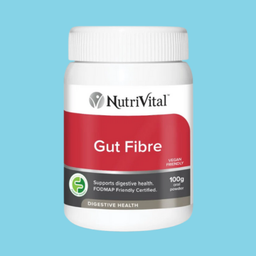Did you know that a woman of menstruating age sends around one wheelie-bin’s worth of sanitary items to landfill each year? Thankfully, there are more sustainable options.
When it comes to periods, so often the focus tends to be on the problems they can cause, like cramping, cravings, mood swings and fluid retention. However, given that there are nearly seven million women of menstruating age in Australia and New Zealand, a far more pressing problem is the use of conventional sanitary protection products – tampons, pads and panty shields – which end up in landfill or our waterways.
Sobering statistics
Women start menstruating from around 11 years of age, and continue doing so until about age 45. The average woman has around 13 periods per year, which means she can expect upwards of 450 periods in her lifetime, with each period lasting for between three and seven days. To put this in perspective, she will spend around six and a half years of her life menstruating!
Now, let’s do the math on the quantity and cost of sanitary protection products. A woman can expect to use about 22 disposable sanitary products per period. This equates to an eye-opening estimate of 11,000 to 17000 tampons and/or pads in her lifetime. And, while you are taking in those figures, consider this: those single-use disposable tampons, pads and panty shields, along with other menstruation-related costs like painkillers and ruined undies, will set that same woman back between $12,000 and $18,000!
Plastic peril
As if all of that isn’t bad enough, then there is the environmental cost. Over three-quarters of blocked drains in Australia and New Zealand are caused by disposable sanitary products. And, even though used pads and tampons should be put in a bin, unfortunately women still flush them down the toilet, with an estimated 192 million pads and tampons ending up in waste water every year. Given that anything up to 90 per cent of a conventional sanitary pad is comprised of plastic, this compounds the burden of plastic which is already facing our oceans and rivers.
A sustainable solution
Now for the good news: Lunette Menstrual Cups Australia is one company that is not only concerned about these problems, but also determined to improve matters by educating women about safer alternatives.
“The problem we face as a nation is that our current way of dealing with disposable menstrual hygiene products is just not sustainable,” says Elizabeth Morris, director of Lunette Menstrual Cups Australia. “With every menstruating woman in Australia and New Zealand using anything up to 17,000 sanitary protection items in her lifetime, the current result is a scary – and quite unnecessary – amount of landfill and waterway pollution, not to mention wasted money.”
When it comes to choosing sanitary protection products, studies show that most women continue to use the same products and brands they were introduced to during early puberty, when they started menstruating. The Morris sisters discovered that schools provided only very limited information about sanitary protection, and the focus was almost exclusively on disposable products. So, they realised that if they were going to instigate real change, they would have to start with schools.
“We created the Sustainable Period Project,” says Morris. “This is a collaboration with some of the largest companies and artisanal communities that produce sustainable and reusable menstrual items. In a world first, we aim to provide all secondary schools in Australia and New Zealand with a free resource kit to facilitate discussions about sustainable sanitary options by the year 2020. Each kit will contain samples of biodegradable disposable pads, reusable period underpants, reusable cloth pads and menstrual cups, along with videos and educational activities that can be used in the classroom for years to come.
“With the war on waste movement gaining momentum in the younger generation, it’s vital that we empower and educate students at a grassroots level about sustainable alternatives which have vital health, cost and environmental impacts on the future of our country.”

